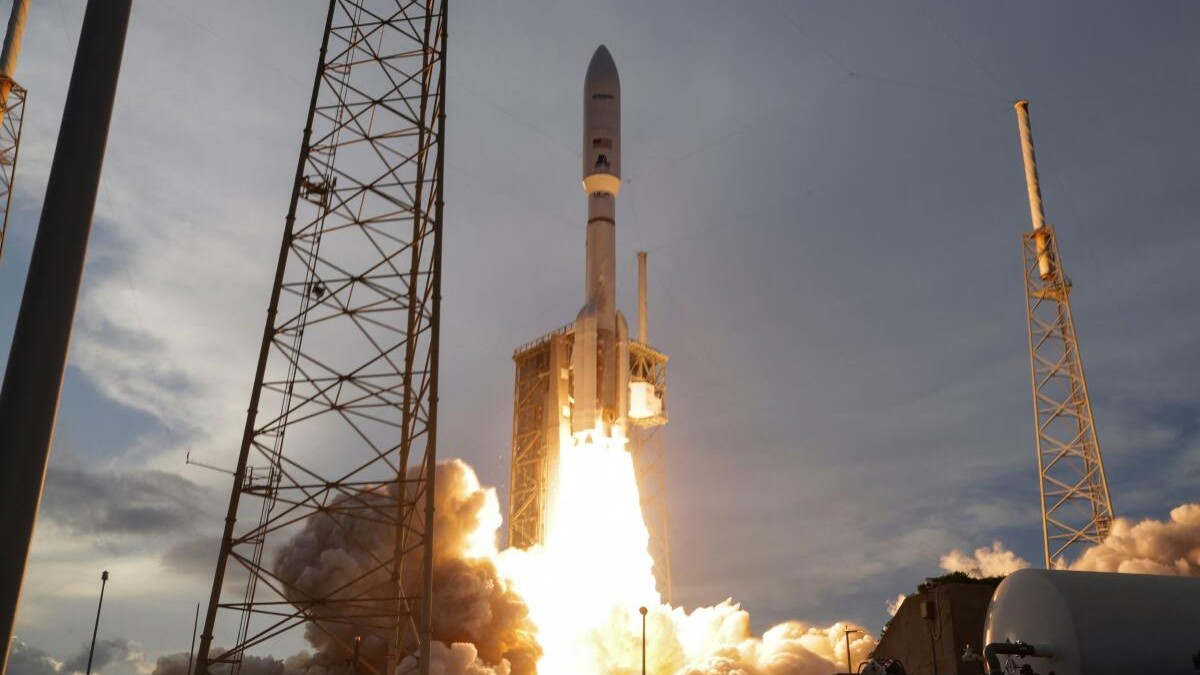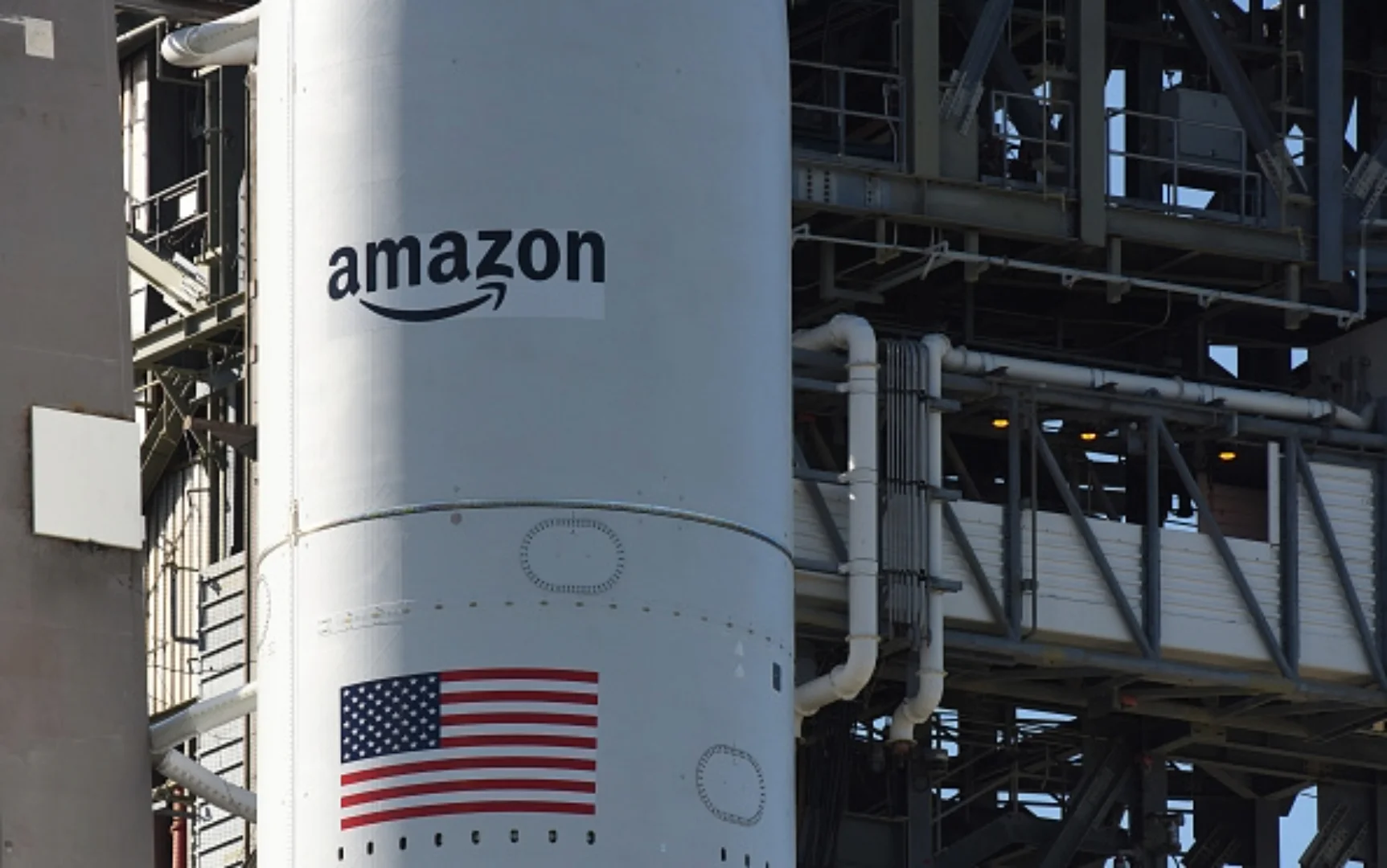Amazon has officially set the stage for a major milestone in the satellite internet race, initially scheduling the launch of its first batch of Project Kuiper satellites for April 9, 2025. This ambitious venture represents the e-commerce giant’s bold entry into the competitive satellite broadband market, directly challenging SpaceX’s dominant Starlink constellation. The launch, which was ultimately delayed and successfully completed on April 28, 2025, marked the beginning of Amazon’s $10 billion investment to deploy 3,236 satellites in low Earth orbit.
Project Kuiper represents more than just another business venture for Amazon—it’s a strategic initiative designed to bridge the digital divide by delivering high-speed internet access to underserved, rural, and remote areas worldwide. The project aims to provide broadband connectivity to millions of people who currently lack reliable internet access, potentially transforming how remote communities connect with the global digital economy. With SpaceX’s Starlink already boasting over 8,000 satellites in orbit and millions of users worldwide, Amazon faces the challenge of catching up in a market where first-mover advantage has proven significant.
The initial launch was planned to deploy 27 operational satellites using United Launch Alliance’s Atlas V rocket from Cape Canaveral Space Force Station in Florida. These satellites represent Amazon’s most advanced communications technology, designed after extensive ground testing and prototype missions. The company had previously launched two prototype satellites in October 2023, but this mission marked the first deployment of full-scale, operational satellites capable of providing commercial internet services. The Federal Communications Commission has mandated that Amazon deploy at least 1,618 satellites by mid-2026, creating a tight timeline for the company’s ambitious constellation plans.
Launch Timeline and Mission Details
The original April 9 launch date faced multiple challenges, with weather concerns forcing the first postponement. Range scheduling conflicts at Cape Canaveral further delayed the mission until April 28, 2025, when Amazon successfully launched its inaugural batch of 27 Kuiper satellites at 7:01 p.m. EDT. The mission, designated KA-01 (Kuiper Atlas 1), utilized a ULA Atlas V 551 rocket and deployed satellites at an initial altitude of 280 miles above Earth before raising them to their operational orbit of 392 miles.

Following the successful first launch, Amazon doubled its satellite fleet with a second mission on June 23, 2025. The KA-02 mission launched another 27 satellites at 6:54 a.m. EDT, bringing the total number of deployed Kuiper satellites to 54. This rapid deployment schedule demonstrates Amazon’s commitment to meeting FCC requirements and establishing a competitive presence in the satellite internet market.
Technical Specifications and Network Architecture
Amazon’s Kuiper satellites represent cutting-edge communications technology designed for low Earth orbit operations. The satellites operate at approximately 392 miles above Earth, positioning them in the optimal range for low-latency internet services. Each satellite incorporates advanced antenna systems and processing capabilities to handle high-bandwidth communications across vast geographic areas.
The constellation’s architecture focuses on providing comprehensive global coverage, with particular emphasis on serving underserved markets where traditional terrestrial internet infrastructure remains limited or non-existent. Amazon’s approach involves deploying satellites in multiple orbital planes to ensure consistent coverage and redundancy across all service areas.
Market Competition and Strategic Positioning
Project Kuiper enters a satellite internet market currently dominated by SpaceX’s Starlink service. With over 8,000 operational satellites, Starlink has established a significant lead in both satellite count and subscriber base. However, Amazon’s vast resources, cloud computing expertise through Amazon Web Services, and established customer relationships provide unique competitive advantages.
The company has secured over 80 launches with various providers, including ironically SpaceX itself, to complete its constellation deployment. This multi-provider approach ensures launch schedule flexibility and reduces dependency on any single launch service provider.
Future Deployment Schedule
Amazon plans up to five additional launches throughout 2025, maintaining an aggressive deployment schedule to meet regulatory requirements. The company faces pressure to deploy at least half of its planned 3,236 satellites by July 2026, requiring sustained launch cadence over the next two years. Mission operations are managed from Amazon’s 24/7 control center in Redmond, Washington, ensuring continuous satellite monitoring and optimization.

